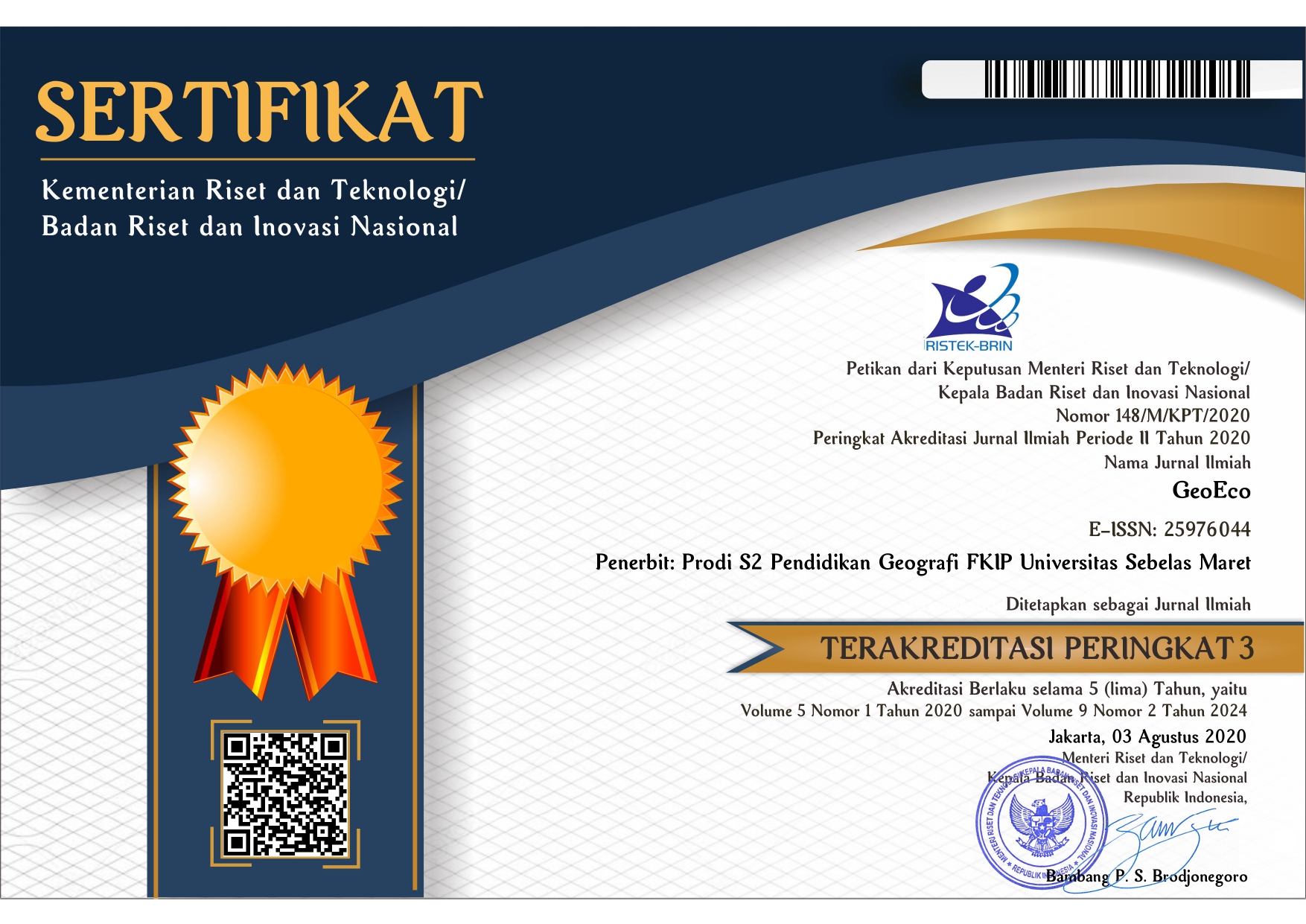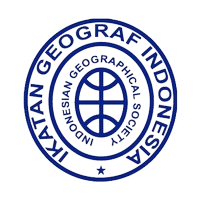FACING SOLO RAYA METROPOLITAN CITY: ANALYSIS OF THE DEVELOPMENT PLANNING
Abstract
Since 2010 Solo Raya has became part of the metropolis candidates that will continue to grow along with the agglomeration of Jogjakarta and Semarang. The problems that trail is the tendency of metropolitan magnitude that resulted in less functioning of the city as a catalyst for regional development. Further impact is the lagging of small and medium-sized cities (Tjahjati, 1995). The development of urban system is determined by both the comparative advantage and the competitive advantages, such as location, natural resources and human resources (Metropolitan Directorate, 2003), so that in planning the development it should focus on the ability to cooperate or synergize between regions (spatial synergism) either in urban and rural area or on a wider scale, cooperation between cities.
The purpose of this research was to arrange aspects and decision criteria in developing metropolitan area of Solo Raya. The method used is literature study approach which is then analyzed descriptively.
The result of analysis showed that in metropolitan area of the world there are 4 (four) main characteristics and problems, they are: (1) city as center of population, economy and government activity, (2) city with environmental problems (air, land and water), as a result of population density, public transportation, and garbage, (3) city with problems in the land aspect (land prices and housing provision) and (4) city with problems on social aspects (criminals and terrorists). The formulation of metropolitan area development planning is done with 3 (three) considerations, they are: (1) avoiding high social segregation between and among regions, (2) creating a balance population mobility and intra and inter-regional services (spirit of togetherness), (3) creating a regional economy (growth, equity and welfare) based on the local potential which has inter-regional connectivity (harmonization). Aspects and criteria are: regional management (spatial planning policy, regional competitiveness, regional marketing, inter-regional cooperation), urbanization (migration, urbanization, agglomeration and conurbation, social integration), economic development (economic growth, employment, economic equalization, urban poverty), regional connectivity (transportation, rural-urban linkage, territorial function), and environment (environmental supporting capacity, disaster risk, environmental degradation, disaster mitigation). The decision priorities include: Industrial City, Service City, City of Tourism and Culture, Trade City, and Agriculture.
Keywords
Full Text:
PDFReferences
Angotti, T. (1993). Metropolis 2000, Planning, Poverty and Politics. New York: Routledge.
Ashworth, G.J., & Voogd, H. (1990). Selling the City: Marketing Approaches in Public Sector Planning-Urban Planning. London: Belhaven Press
Badan Kerjasama Antar Daerah (BKAD). (2014). Kerjasama Antar Daerah Sebagai Payung Pengembangan Ekonomi Lokal Daerah, Presentation on ‘Workshop and Implementation Study of Reinforcement Regional Management in Local Economic Disanvantaged Regions for Bilateral Partnership Sinergy Program KPDT, Bappenas dan GIS-RED’, Solo 7 October 2014.
Bourne, Larry S (ed). (1971). Internal Structure Of The City. New York, Oxfrord University Prees.
Kotler, P (1999). Marketing Places Europe: Attracting Investment, Industries, Resident and Visitors to European Cities, Communities, Regions and Nations. London: Pearson Education.
Kotler, P & Amstrong (2008). Marketing Asian Places: Attracting Investment, Industry, and Tourism to Cities, States, and Nations. Singapore: John Wiley & Sons, Inc.
Handini, K. (2010). Regional Branding “Solo the Spirit of Java” (Suatu Tinjauan dari Aspek Hak Kekayaan Intelektual). Law Magister Program Thesis of Diponegoro University. Unpublished
McGee, T.G. (1987). Urbanisasi or Kotadesasi: The Emergence of New Regions of Economics Interaction in Asia. Honolulu Environment and Policy Institut, pp. 93-108.
(1997). The Emergences of Desa-Kota Regions in Asia : Expanding a Hypothesis. In The Extended Metropolis and Settlement Transsition in Asia. The University of Hawaii Press: Honolulu.
McGee, T.G., Ginsburg, N.S., and Koppel, B. (1991). The Extended Metropolis: Settlement Transition in Asia. The University of Hawaii Press: Honolulu
Montgomery, Stren, Cohen, & Reed. (2003). Cities Transformed Demographic Change and Its Implication in the Developing World. Washington, D.C: The National Academies Press.
Riyadi, D.S. (2002). Pengembangan Wilayah, Teori dan Konsep Dasar, Prosiding Pengembangan Wilayah dan Otonomi Daerah, Jakarta: Pusat Pengkajian Kebijakan Teknologi Pengembangan Wilayah, Deputi Pengkajian Kebijakan Teknologi, Badan Pengkajian dan Penerapan Teknologi.
Riyadi. (2009). Fenomena City Branding Pada Era Otonomi Daerah. Jurnal Bisnis dan
Kewirausahaan, Vol. 5 No.1, Maret 2009 Hal-1.
Rosan, C., Ruble, B.A., Tulchin, J.S. (2000). Urbanization, Population, Environment, and Security. Washington, DC: The Woodrow Wilson International Center for Scholars.
Rydin, Y. (1993). The British Planning System-An Introduction. London: Macmillan.
Situmorang, S.H. (2008). Destination Brand: Membangun Keunggulan Bersaing Daerah. Wahana Hijau Jurnal Perencanaan & Pengembangan Wilayah, Vol.4, No.2,
Desember 2008
Tjahjati, Budhy. (1995). Kebijaksanaan Pembangunan Perkotaan di Indonesia. Jurnal PWK-ITB Tahun 1995. Bandung.
U.N. HABITAT. (2006). The State of the World’s Cities Report 2006/2007. The Millennium Development Goals and Urban Sustainability: 30 Years of Shaping the Habitat Agenda. London: Earthscan
Winarso, Pradono, Zulkaidi, & Miharja. (2002). Pemikiran dan Praktek Perencanaan dalam Era Transformasi di Indonesia. Bandung: Departemen Teknik Planologi ITB.
Refbacks
- There are currently no refbacks.












.png)

